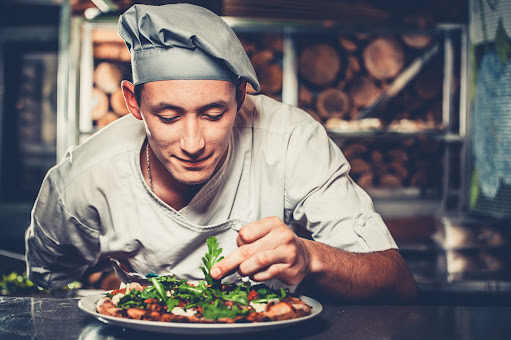In the realm of modern gastronomy, chefs are pushing culinary boundaries through the art and science of molecular gastronomy. This avant-garde cooking technique goes beyond traditional methods, utilizing scientific principles to transform the texture, appearance, and overall dining experience. In this article, we will explore the fascinating world of molecular gastronomy and its impact on the evolution of advanced cooking techniques.
The Science Behind Molecular Gastronomy:
Molecular gastronomy involves the application of scientific principles to understand and manipulate the physical and chemical transformations that occur during cooking. By exploring the physics, chemistry, and biology of food, chefs can create innovative dishes that surprise and delight diners. Techniques such as spherification, gelification, and foaming are key components of this culinary science.
Spherification: Turning Liquids into Edible Pearls:
Spherification is a hallmark technique in molecular gastronomy, popularized by chefs like Ferran Adrià. It involves transforming liquid ingredients into delicate, caviar-like spheres. This technique is achieved through the use of sodium alginate and calcium chloride, creating a thin gel membrane around the liquid. The result is visually stunning and introduces bursts of flavor in each tiny pearl, providing a unique and memorable dining experience.
Foaming: The Culinary Embrace of Air:
Foaming is a technique where chefs introduce air into a liquid to create a light, frothy texture. This method relies on ingredients such as soy lecithin or gelatin to stabilize the foam. Whether it's a delicate fruit foam atop a dessert or a savory foam enhancing a savory dish, this technique allows chefs to play with texture and intensify flavors in a visually appealing manner.
Gelification: Transforming Liquids into Gels:
Gelification involves turning liquids into gels, adding an unexpected textural element to dishes. Ingredients such as agar-agar or gelatin are used to achieve this transformation. Chefs can create intricate shapes, layers, and textures with gelification, opening up new avenues for creativity in both sweet and savory applications.
Cryogenic Cooking: Flash-Freezing for Instant Gratification:
Cryogenic cooking involves the use of liquid nitrogen or other extremely cold substances to quickly freeze and transform ingredients. This rapid freezing process produces unique textures and intensifies flavors. From flash-freezing ice cream to creating ethereal frozen clouds, cryogenic cooking adds a touch of drama and innovation to the culinary stage.
The Art of Deconstruction: Unraveling and Reimagining Dishes:
Molecular gastronomy often involves deconstructing traditional dishes and then reconstructing them in unexpected ways. Chefs might turn a classic into a multi-textural experience, presenting familiar flavors in entirely novel forms. This deconstruction and reimagining process challenge diners to engage with food on a new level, breaking free from culinary conventions.
Precision and Innovation: The Marriage of Art and Science:
What sets molecular gastronomy apart is its commitment to precision and innovation. Chefs meticulously measure and calculate the chemical reactions occurring in their creations, ensuring consistency and repeatability. This marriage of art and science has given rise to a new wave of culinary pioneers who view the kitchen as a laboratory for experimentation.
Conclusion:
Molecular gastronomy has emerged as a transformative force in the culinary world, allowing chefs to push the boundaries of creativity and redefine the dining experience. By embracing scientific principles, chefs practicing molecular gastronomy engage in culinary alchemy, turning ordinary ingredients into extraordinary works of art. As this avant-garde approach continues to evolve, it not only captivates the senses but also challenges our perceptions of what is possible in the world of food. Molecular gastronomy is not just about what's on the plate; it's a sensory journey that invites diners to rethink their relationship with food and savor the unexpected.

Comments
Post a Comment